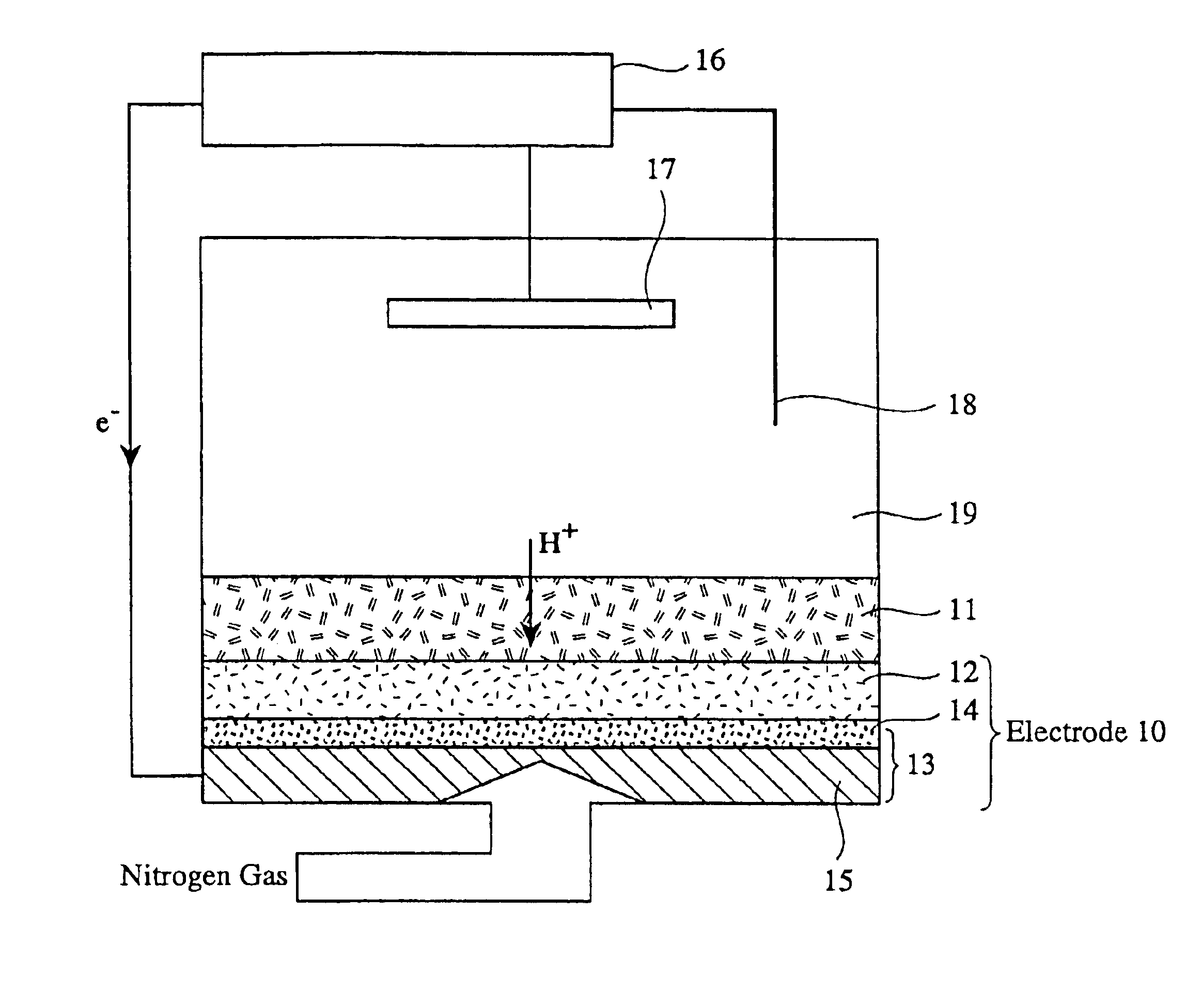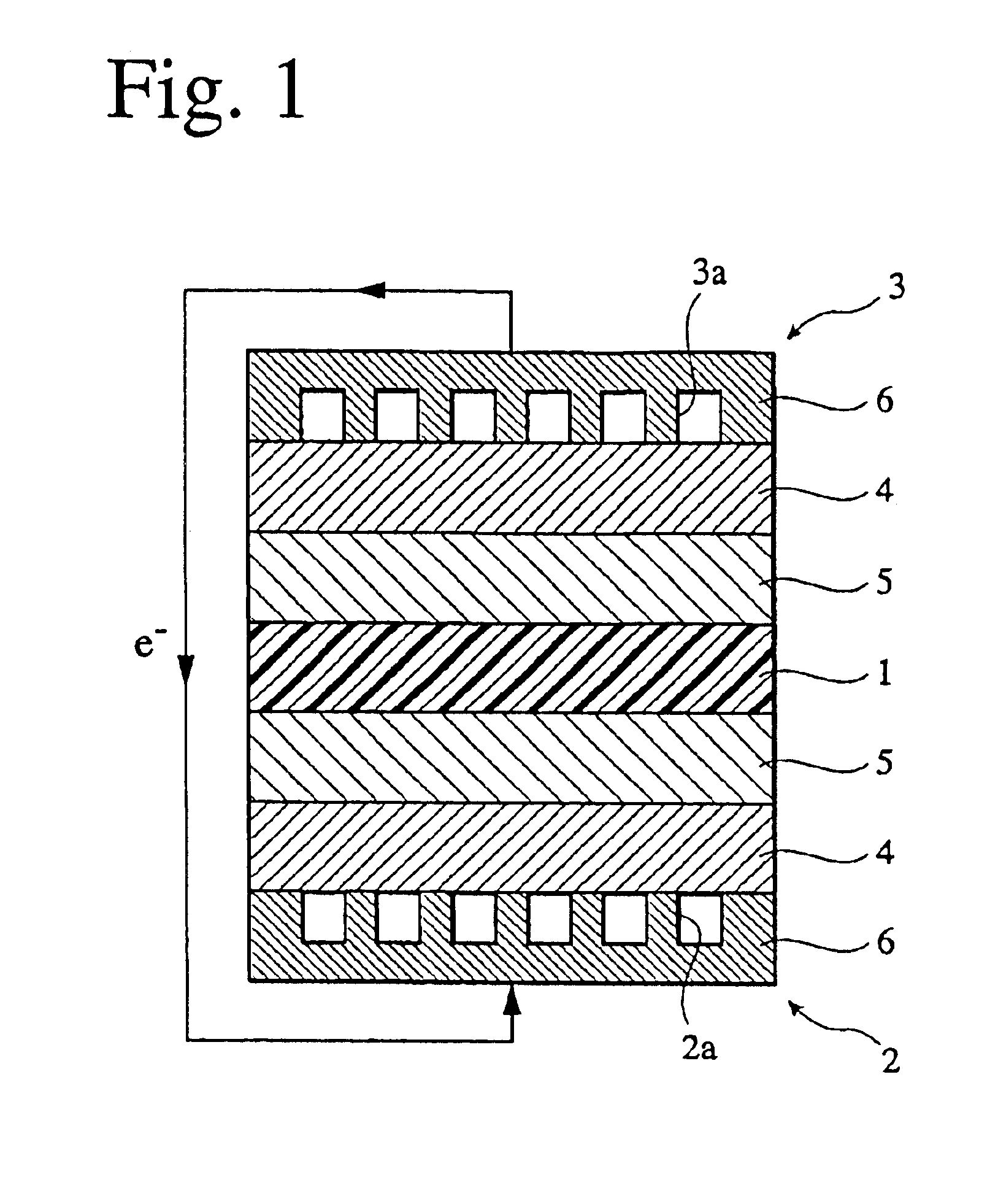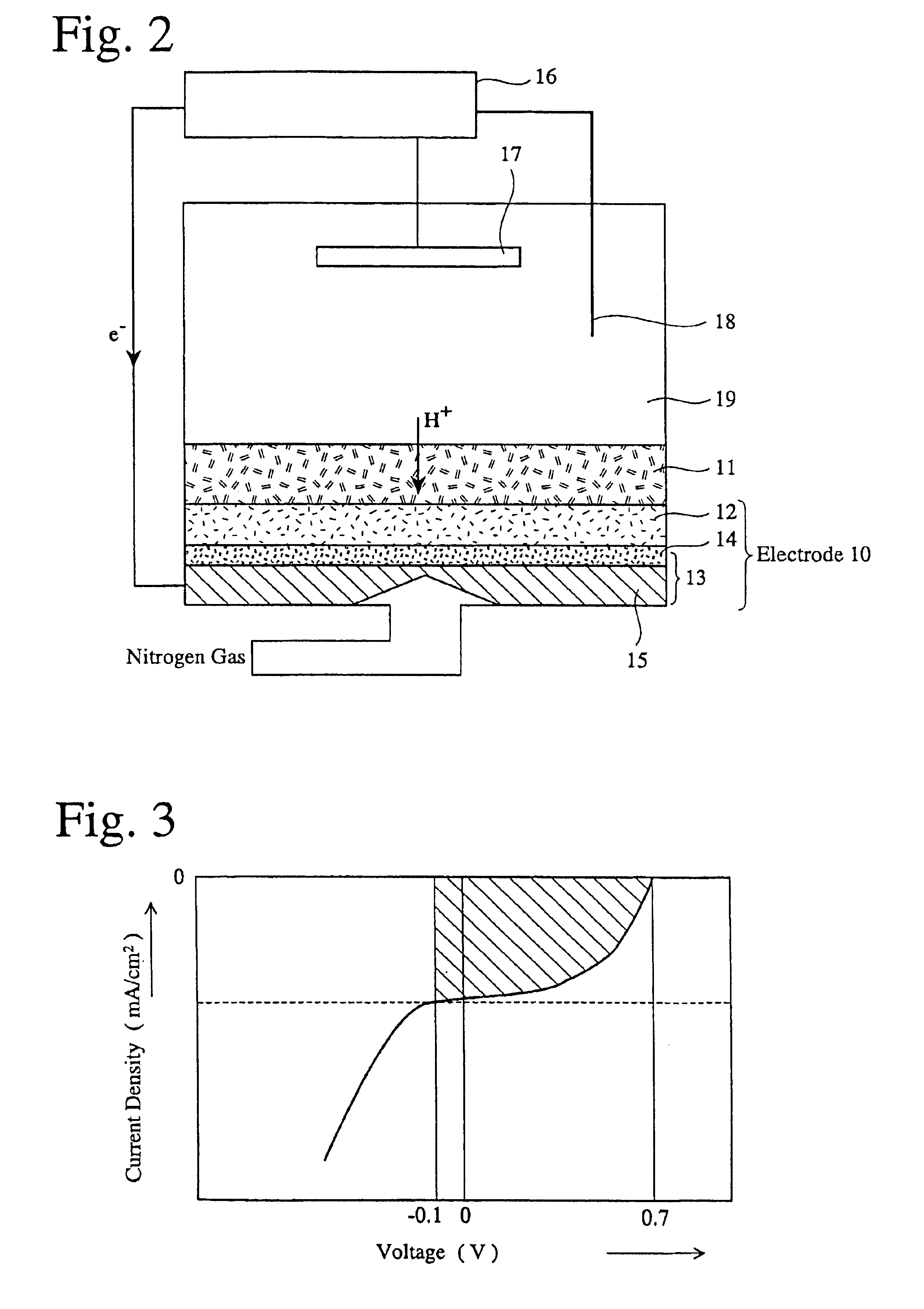Polymer electrolyte membrane, method for producing same, and membrane electrode assembly and polymer electrolyte fuel cell comprising same
a technology of polymer electrolyte and membrane electrode, which is applied in the direction of non-aqueous electrolyte cells, cell components, sustainable manufacturing/processing, etc., can solve the problems of high cost, insufficient nafion® demand, and high demand, and achieve the effect of low ion conductivity dependen
- Summary
- Abstract
- Description
- Claims
- Application Information
AI Technical Summary
Benefits of technology
Problems solved by technology
Method used
Image
Examples
example 1
[0071]First, an ion-conducting, aromatic polymer membrane made of a sulfonated polyarylene represented by the following chemical formula (4):
and having a weight-average molecular weight of 100,000 and an ion exchange capacity of 2.3 meq / g was dissolved in N-methylpyrrolidone, and formed into a polymer electrolyte membrane 1 having a dry thickness of 50 μm by a casting method.
[0072]Carbon black was mixed with polytetrafluoroethylene (PTFE) at a weight ratio of carbon black:PTFE=4:6, and uniformly dispersed in ethylene glycol to form a slurry. The slurry was applied onto one surface of a carbon paper, and then dried to form a lower layer, thereby forming a gas-diffusion layers 21, 31 each constituted by a carbon paper and a lower layer.
[0073]Catalyst particles comprising platinum carried on furnace black at a weight ratio of furnace black:platinum=1:1 were uniformly mixed with a solution of an ion-conducting binder comprising a sulfonated perfluoroalkylene aromatic polymer [Nafion® (...
example 2
[0077]A polymer electrolyte fuel cell was produced in the same manner as in EXAMPLE 1 except for preparing a polymer electrolyte membrane using an ion-conducting, aromatic polymer membrane made of a sulfonated polyarylene represented by the following chemical formula (5):
and having a weight-average molecular weight of 60,000 and an ion exchange capacity of 1.7 meq / g.
[0078]This ion-conducting, aromatic polymer membrane had an initial water content of 94 weight % based on the aromatic polymer. The ion conductivity of this polymer electrolyte membrane was measured before and after the hot-water treatment. The initial water content of the polymer electrolyte membrane, their B / A ratios before and after the hot-water treatment, and their D / C ratios are shown in Table 1.
example 3
[0079]An polymer electrolyte fuel cell was produced in the same manner as in EXAMPLE 1 except for preparing a polymer electrolyte membrane using an ion-conducting, aromatic polymer membrane made of a sulfonated polyarylene represented by the chemical formula (4) and having an ion exchange capacity of 2.5 meq / g.
[0080]This ion-conducting, aromatic polymer membrane had an initial water content of 276 weight % based on the sulfonated polyarylene. The ion conductivity of this polymer electrolyte membrane was measured before and after the hot-water treatment. The initial water content of the polymer electrolyte membrane, their B / A ratios before and after the hot-water treatment, and their D / C ratios are shown in Table 1.
PUM
| Property | Measurement | Unit |
|---|---|---|
| humidity | aaaaa | aaaaa |
| humidity | aaaaa | aaaaa |
| temperature | aaaaa | aaaaa |
Abstract
Description
Claims
Application Information
 Login to View More
Login to View More - R&D
- Intellectual Property
- Life Sciences
- Materials
- Tech Scout
- Unparalleled Data Quality
- Higher Quality Content
- 60% Fewer Hallucinations
Browse by: Latest US Patents, China's latest patents, Technical Efficacy Thesaurus, Application Domain, Technology Topic, Popular Technical Reports.
© 2025 PatSnap. All rights reserved.Legal|Privacy policy|Modern Slavery Act Transparency Statement|Sitemap|About US| Contact US: help@patsnap.com



